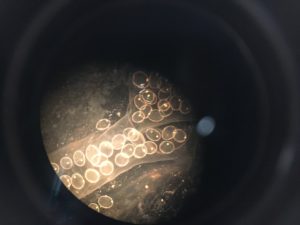A new study from ILA and the Lead REACH Consortium has found L. stagnalis is significantly less sensitive to lead than previously suggested.
The study was commissioned by the Lead REACH Consortium to investigate the effects of prolonged exposure to lead on the reproduction and survival of Lymnaea stagnalis, better known as the Great Pond Snail. Ubiquitous in freshwaters around the world, the L. stagnalis species is one of the most sensitive to lead toxicity and other metals in laboratory studies.
This apparent sensitivity has seen L. stagnalis become a key focus in the setting of very low regulatory thresholds for hazard classification and environmental quality standards around the world, and in particular in Europe, Canada and the USA. Confirming – or, rather, disproving – the sensitivity of this snail to lead toxicity is key to defensible water quality standards and regulatory thresholds in the Europe and North America.
The OECD ‘Guidelines for the Testing of Chemicals’ is a collection of around 150 of the most relevant internationally agreed testing methods used by government, industry and independent laboratories to identify and characterise the potential hazards of chemicals. This set of tools includes OECD 243 – where reproducing adults of L. stagnalis are exposed to a concentration range of the test chemical and monitored for their survival and reproduction. Although adopted internationally in 2016, it has never before been applied to lead for aquatic toxicity.
In the new OECD 243 study, adult snails were exposed to a concentration range of lead nitrate and their survival, growth and reproduction was monitored for 28 days. This new study resulted in a threefold increase of the chronic ERV for Pb (from 1.7 µg/L to 6.1 µg/L) with algae being identified as the most sensitive species.
The results of the study showed no effects, even at the maximum concentration (110 µg dissolved Pb/L), on snail mortality, growth or reproduction. This demonstrates that L. stagnalis is significantly less sensitive to lead than suggested by the datapoint used by Denmark and RAC in their original harmonised environmental classification evaluation.
These significant new results were provided to the European Commission in October 2019 and helped support a request that RAC re-evaluate the available evidence relevant for determining a harmonised classification of lead metal in massive form.
“It is incredibly exciting to have worked on a study that should be useful for members today, as well as the future of our industry. The findings provide a more robust evidence-base to help our members challenge the proposed EU harmonised classification of lead in massive form. This is an example of the global leadership ILA’s scientists can provide.” Adds Dr. Steve Binks, Regulatory Affairs Director, ILA.
Currently, two further studies supported by the Pb REACH consortium are underway: one a sensitivity field survey using monitoring data with co-sponsorship from other metal associations under the ETAP programme, and the other on the modelling of lead effects on this species at the population level. These will add further evidence-based insights on the aquatic toxicity of lead.

A Lymnaea stagnalis egg clutch under the microscope
